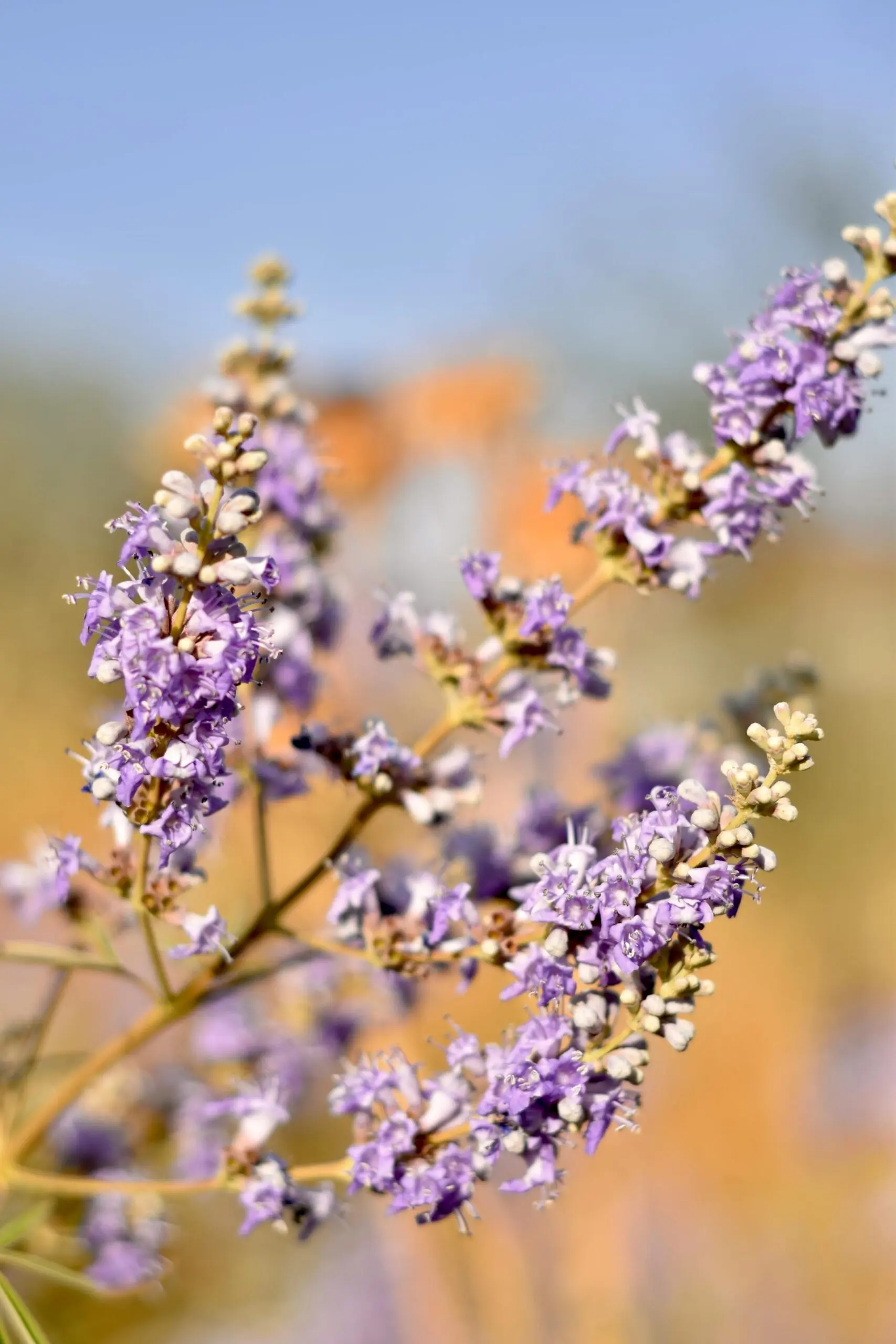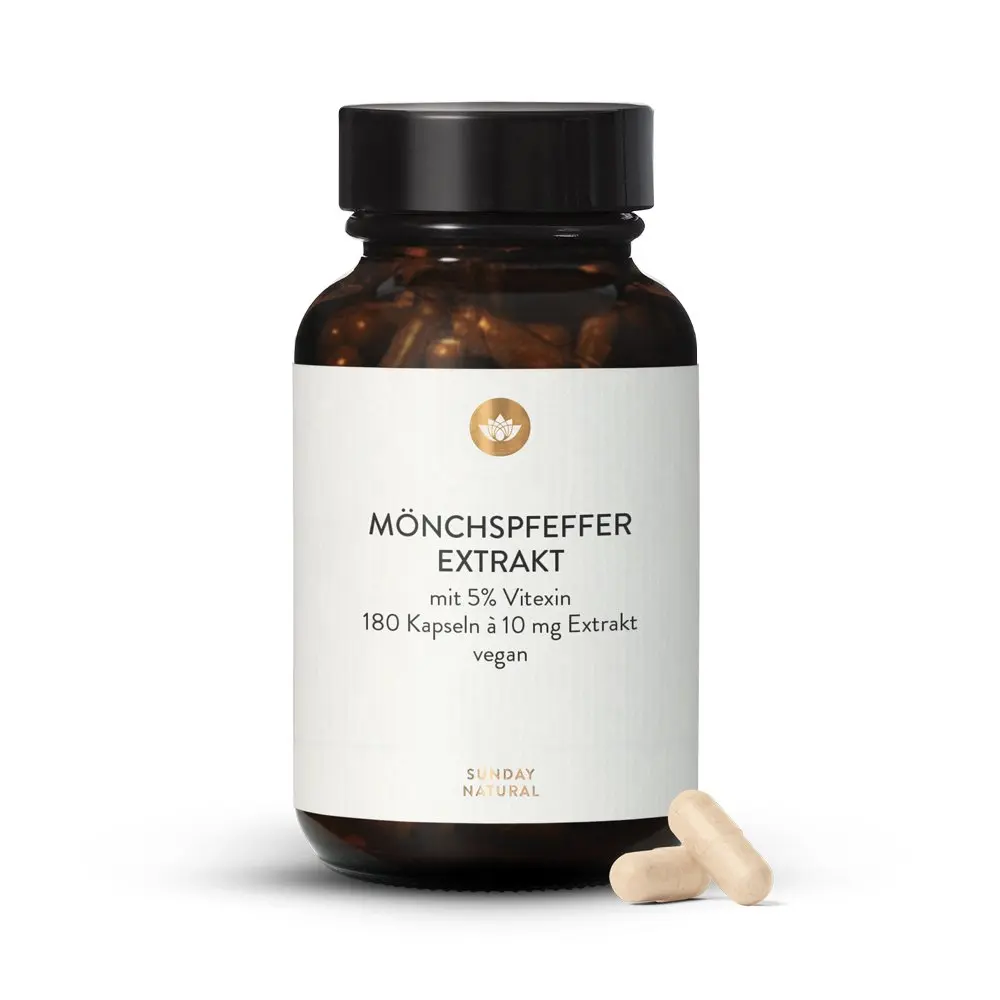
© © Fatih Kerim Tülü
December 16, 2024
Sharon Burbat
- Women's Health
- Health
Chaste Tree: Remedy for Menopause and PMS?
The medicinal plant chaste tree is said to have soothing properties for various women's ailments. What's behind it...

© © Fatih Kerim Tülü
December 16, 2024
Sharon Burbat
The medicinal plant chaste tree is said to have soothing properties for various women's ailments. What's behind it...
For hormonal complaints and those related to the cycle, chaste-tree is often and gladly recommended. Even though it is not yet medically recognized for all areas of application, it already acts almost like a panacea for women .
Chaste-tree is a plant from the mint family and is scientifically called Agnus castus. It is a shrub several meters high that bears small, fragrant flowers and fruits. The fruit of the chaste-tree is used to treat complaints such as premenstrual syndrome. The term "chaste spice" for monks comes from the fact that the plant is said to weaken sexual desire. In addition, the reddish-black spherical fruits resemble black pepper even taste spicy, and were used as a substitute for pepper in the monastery.
Today it is known (although not yet fully researched) that the essential oils contained in the fruits have hormone-regulating properties, which can explain the effectiveness in gynecological complaints. Monk's pepper stimulates docking sites for dopamine in the pituitary gland and inhibits the release of prolactin, a hormone also known as the milk-forming hormone. During Pregnancy this hormone is responsible for the growth of the mammary gland and after birth for milk production. It also suppresses ovulation during this time and is thus associated with triggering the nesting instinct in us. Prolactin is therefore indispensable during pregnancy and lactation.
However, if the level is high - even though neither pregnancy nor lactation is present - it can negatively affect the menstrual cycle, promote endometriosis, and even prevent ovulation. This is where monk's pepper comes in: it causes less prolactin to be released.
But beware! The dosage is crucial with monk's pepper. Only in high concentrations can the Medicinal plant reduce prolactin levels, whereas at low doses the opposite happens: prolactin secretion is promoted. At the same time, an overdose can lead to side effects. You should therefore always strictly adhere to the recommendations of the respective manufacturer.
As a rule, chaste tree is taken as a finished medicinal product in the form of capsules, drops or tablets. On chaste tree should rather be avoided. Not only is it difficult to control the exact dosage here - the ingredients that are responsible for the hormone-regulating effect are not water-soluble at all.
For menstrual problems, a dose of 40 mg chaste tree extract is recommended, for menopausal symptoms a dose of 40 mg to 80 mg. This should be done over a period of at least three months. Because it can take a few weeks for the potential effects to take effect.

Chaste tree extract with 5% Vitexin, 9.90 euros (180 capsules) Agnucaston 20mg, about 22 euros (60 film-coated tablets) Organic chaste tree drops naturally from chaste tree extract (Agnus Castus), 29.90 euros (50 ml) The chaste tree mainly grows in Mediterranean countries and Central Asia
The side effects of chaste tree, although rare, include:
Generally, monk's pepper is well tolerated. However, those who take dopamine receptor antagonists need to be careful, as there are interactions here. Women who are on the pill, have hormone replacement therapy, pituitary disorders, or certain types of breast cancer should avoid monk's pepper. The same applies during pregnancy and breastfeeding.
Premenstrual syndrome, or PMS for short, is well known to many before and during their period, especially because it manifests itself through mood swings. Complaints such as water retention and breast tenderness are also part of it. The cause of this is an imbalance of sex hormones in the second half of the cycle – it usually results in estrogen dominance compared to progesterone.
Since chaste tree has progesterone-promoting properties, it is used as a gentle remedy for menstrual complaints and is also medically recognized for this purpose. In addition to PMS, these also include general period pain and irregular bleeding.
The prolactin-lowering properties also help with tense breasts.